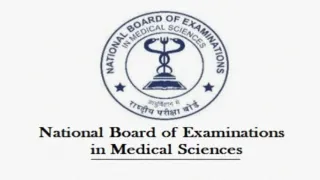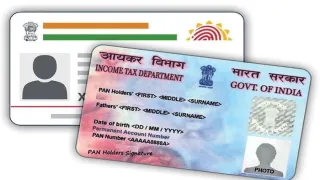Ayodhya, Lord Rama's legendary birthplace and capital, is teeming with more than a thousand old temples connected to Hindu mythology. Engrosses you in enduring spirituality as you trace back thousands of years to significant locations mentioned in the Ramayana.
With a comprehensive guide to the Top 10 Places to Visit in Ayodhya in 2024, you may explore India's sacred epicentre and establish a profound spiritual connection with Rama and other deities while exploring.
The Top 10 Places to Visit in Ayodhya in 2024
Ram Janmabhoomi

Image Source: Twitter
Translating as the "Birthplace of Ram," the Ram Janmabhoomi is said to be the birthplace of Lord Ram, the Hindu god. In the Indian epic Ramayan, it is stated that Ram, the seventh incarnation of Lord Vishnu, grew up along the Sarayu river in Ayodhya. Hindu worshipers hold great respect for the Ram Janmabhoomi.
The Supreme Court of India gave the Ram Janmabhoomi property to a trust so that the Ram Temple may be built thereafter it had been a contentious location for decades. On August 5, 2020, Prime Minister Narendra Modi conducted the groundbreaking ceremony to lay the foundation stone for the Ram Temple in Ayodhya. The temple's planned architecture is opulent and stunning.
Hanuman Garhi

Image Source: Twitter
Hanuman Garhi, a temple built in the tenth century honouring the Hindu deity Hanuman, is situated near Sai Nagar. Given that it is usual to visit Hanuman Garhi before visiting the Ram Temple in Ayodhya, it is one of the most significant temples in the city. It is said that Lord Hanuman inhabited the temple complex that protected Ayodhya.
The 76 staircases that lead to the entrance of the hilltop shrine are refined. Inside the expansive panorama of the neighbouring hills is a 6-inch-tall Hanuman statue. A cave inside the main temple is home to several idols of Lord Hanuman and his mother, Maa Anjani. Thousands of devotees go to the Hanuman Garhi during Ram Navami and Hanuman Jayanti, which commemorate the births of Lord Ram and Lord Hanuman, respectively.
Timings: 5:00 AM - 11:00 PM
Entry Fee: Free
Kanak Bhawan

Image Source: Twitter
In Tulsi Nagar, the Kanak Bhawan is located in the northeastern corner of the Ram Janmabhoomi. Sone-ka-Ghar is another name for this temple, which was built in 1891. This sacred location honors the Hindu god Lord Rama and his spouse, Goddess Sita.
The sanctum santorum (Garbagriha) of Kanak Bhawan, also known as Golden Palace, is home to three golden-crowned statues of the two gods covered by a silver ceiling. It is said that Kaikeyi, Rama's stepmother, gave Sita and Rama this temple.
Following planned renovations under Vikramaditya's rule, Vrish Bhanu Kunwari completely redesigned the current location. The Sri Vrishbhan Dharma Setu Trust Private Limited is presently in charge of overseeing this Bundela-style temple.
Timings: 8:00 AM to 11:00 AM, 4:30 PM to 9:00 PM
Aarti Timings: Summers - 8:00 AM to 9:00 AM and 7:00 PM to 8:00 PM, Winters - 8:30 AM to 9:30 AM and 6:30 PM to 7:30 PM
Nageshwarnath Temple

Image Source: Twitter
The Nageshwarnath Temple, which was built in honour of the local god Lord Nageshwarnath, is situated in Ayodhya next to the Theri Bazaar. It is said to have been established by Lord Rama's son, Kush or Kusha.
Even though this holy location has been well-maintained since 750 AD, Safar Jung's minister Naval Rai is credited with rebuilding the present temple in 1750. According to legend, Kush met Naga Kanya, a Shiva devotee, after misplacing his arm ring in the neighbourhood bath.
He built this Shaiva temple for Naga Kanya after finding out that she had fallen in love with him. In Southern India, during Mahashivaratri and Trayodashi, also called Pradosh Vrat or Pradosh Vratam, the Nageshwarnath Temple draws a large number of people. A major draw here is the Shiva Barat or the procession of Lord Shiva.
Timings: 5:00 AM to 8:00 PM
Aarti Timings: 5:00 AM to 6:00 AM and 8:00 PM to 8:30 PM
Gulab Bari

Image Source: Twitter
The Gulab Bari, also called the Garden of Roses, is located in Vaidehi Nagar. It is the final resting place of Nawab Shuja-ud-Daula, the third Nawab of Faizabad (Oudh or Awadh), as well as his parents.
The Gulab Bari's 18th-century building has fountains, luxuriant vegetation, and classic Nawab-style architecture, among many other kinds of roses. Currently protected as a component of the nation's history, Gulab Bari is listed under the Ancient Monuments and Archaeological Sites and Remains Act.
Timings: 4:00 AM to 7:00 PM
Entry Fee: None
Sita Ki Rasoi

Image Source: Twitter
Sita ki Rasoi, located in Rajkot, Ayodhya, on the northwest side of the Ram Janmanhoomi, is said to be an old kitchen that the goddess Sita herself used. This holy location, which was constructed not far from the Ram Janmabhoomi, is now a temple with several display vessels within. This subterranean kitchen, known as Sita Ki Rasoi, is one of the two kitchens that bear Sita's name.
The elaborately dressed and ornamented idols of Ram, Lakshman, Bharat, Shatrughan, and their wives Sita, Urmila, Mandavi, and Srutakirti are located at the other end of the temple. Sita, sometimes called Goddess Annapurna, is revered as the Goddess of Food. As a result, the temple continues this custom by providing free food. Here, visitors may also make charitable donations of any size.
Entry Fee: None
Timings: 8:00 AM to 6:00 PM
Tulsi Smarak Bhawan

Image Source: Twitter
The Tulsi Smarak Bhawan was built in honour of Goswami Tulsidas, a saint and poet who lived in the 16th century. It is thought that Tulsidas wrote the Ramcharita there. The Smarak was constructed in 1969 by Sri Vishwanath Das, the governor of Uttar Pradesh at the time, and is situated near Rajgang Crossing in Ayodhya, on the eastern terminus of the National Highway.
Apart from its extensive collection of rare books, the Smarak also has a research centre known as the "Ayodhya Research Sansthan." It is utilized to research Ayodhya and add literary, cultural, and spiritual significance. Along with regular Ramkatha recitations, the centre features arts and crafts related to the Ramayana.
The Ram Katha Sanghralaya, a museum that has an excellent collection of artefacts, documents, and information about the life and times of Lord Sri Ram, was also established by the government in 1988. Every year on the seventh of the Shravan month, Tulsi Jayanti is celebrated with great fanfare and spectacle in addition to the customary prayers, devotional songs, and discourses.
Timings: 10:00 AM to 9:00 PM
Ramleela Performance: 6:00 PM - 9:00 PM
Library: 10:30 AM - 4:30 PM
Office: 10:00 AM - 5:00 PM
Closed: Mondays and second Sundays of every month
Time Required: 1 - 2 hrs
Entry Fee: Free
Bahu Begum Ka Maqbara

Image Source: Twitter
Known as the “Taj Mahal of the East,” Bahu Begum ka Makbara is situated on the Maqbara Road in the town of Faizabad. The highest monument in all of Faizabad, the unusual tomb honouring Queen Bride Begum Unmatuzzohra Bano, the wife and queen of Nawab Shuja-ud-Daula, is renowned for its outstanding non-Mughal architecture.
The Bahu Begum ka Makbara is an amazing example of Awadhi architecture, including three domes, delicately constructed interiors, and beautifully crafted walls and ceilings. Constructed in 1816 to honour the Queen and serve as her final resting place, the shrine came at an enormous financial expense—three lakh rupees.
Currently, the Archaeological Survey of India (ASI) has designated the grounds as a protected site; the complex's front gardens are exquisitely landscaped, and the location is a top tourist destination. From the top of the tomb, there is also a stunning bird's eye perspective of the entire city.
Timings: 7:00 AM - 4:00 PM
Time Required: 1 - 2 hrs
Entry Fee: No Entry Fee
Ram Katha Park

Image Source: Twitter
A lovely park in Ayodhya with well-manicured grass and outdoor theatres is called Ram Katha Park. Covering a huge space, it is a well-liked location for religious activities, dancing, poetry, Katha recitals, cultural shows, and devotional programs.
Ram Katha Park is utilized as an adult leisure garden or as a playground for children on weekday nights when there are no events. Additionally, it encourages national and international artists to display their abilities and supports pop culture events. It has grown to be a popular choice as the spacious amphitheatre provides a break from the busy and claustrophobic municipal halls.
Timings: Sunrise - Sunset
Time Required: 1 - 2 hrs
Entry Fee: No Entry Fee
Moti Mahal

Image Source: Twitter
Popularly known as the ‘Pearl Palace’, Moti Mahal is located a few kilometres away from the town of Ayodhya in Faizabad. Built in 1743 AD, the palace was the residence of Queen Begum Unmatuzzohra Banu, wife of the then Nawab Shuja-ud-Daulah. A fine marvel of Mughal architecture, the grandeur of the monument reverberates with the rich heritage of the Nawabi culture.
Timings : Monday to Friday - 12:00 PM - 11:00 PM
Sundays - 5:30 PM - 11:00 PM
Time Required : 1 - 2 hrs
Entry Fee : None
Also Read: Top 5 Places to Visit in Varanasi in 2024

































